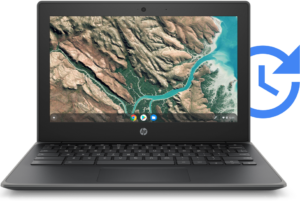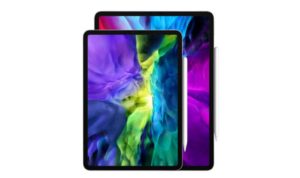Pros and cons of Chromebooks and iPads
Even with technology all around us, for many schools and parents there’s still a lot to learn. It makes deciding on a learning device feel like nothing short of guesswork.
Chromebooks and iPads are two very different devices, offering different functions and features that will suit one student more than another. Here we outline the difference between each device and their pros and cons, so you can decide what will be best for you.
Google Chromebooks – easy to manage and share

If the student is going to be sharing a device with others at home or school, go for a Chromebook. This is because it syncs with Google, which makes it easy to set up and access multiple accounts from the one device. This keeps your child’s data and apps safe and secure – and only accessible using their login details.
For schools looking to invest in learning devices, Chromebooks have the benefit of being very easy to manage. Google’s enterprise-level management tools come as part of Google Apps, which make it easy to manage large numbers of devices.
Note-worthy device features:
- Price – Chromebooks are a more budget-friendly option, especially if you’re investing in a device for more than one child.
- Storage – cloud-based storage for data and files like Google Drive and Google Docs make it easy to access documents from home or offline.
- Security – built-in anti-virus and disk encryption
- Keyboard – a laptop, rather than a tablet, Chromebooks are great for students who need to do a lot of word processing.
- Support – Google support is available 24/7.
The downsides
Chromebooks have a lack of browsers – students can only use Google Chrome. Because some applications are browser-dependent, this may limit what can be used. Chromebooks also have a reputation for issues with internet connectivity. They’re not very good at connecting with other hardware like projectors and scanners, and they struggle to run any applications that need a high level of processing power.
Apple iPad – well supported, flexible

Apple technology is well-known for its support of education. Educational apps are always growing and developing, and the iPad can interact with a variety of them. The app marketplace also offers a large app ecosystem that comes with a high level of security.
The iPad operating system is iOS, and Apple is the sole provider. They are fast, easy to use, lightweight and portable, making them super easy for students to carry from classroom to classroom. For schools, they can be used as communication tools – opening up the classroom and providing easy access to the teacher for those students who might be too shy to ask questions.
Note-worthy device features:
- Multi-functional – use Airplay to share screens on projectors or TVs.
- Long battery charge – iPads have great batteries and will last the entire day without dying – essential for school use.
- Security – Apple has a strong security platform.
- User-friendly – for students of all learning abilities.
- Support – access to Apple’s helpdesk team should you need it
The downsides
iPads – while designed with educational outcomes in mind – only support apps and platforms that are operable on iOS. Things like Adobe Flash (so often used for school and website content), Microsoft or Google management tools are often not compatible with or can be difficult to run on iPads, which can make it difficult to manage a large number of devices. iPads are great if your child’s school is kitted out with Apple products, but if not, interconnectivity can be challenging. They’re also expensive, have no keyboard or USB port, and can only open one window at a time.
Each serves a purpose
When deciding on whether to buy a Chromebook or iPad, keep in mind price, functionality, battery life, and how easy it is to use, manage, maintain and share. Most importantly, it needs to be fit for purpose. Start by asking, “How will the child or school be using the learning device?” The answer to this should guide your decision-making.
We’ve helped a lot of schools and parents implement learning devices in the classroom – and we can help you too.
Reach out to Isometric to help you make the right decision. Or Give us a Call
Check out our related article on Choosing the right device for your high school student.
